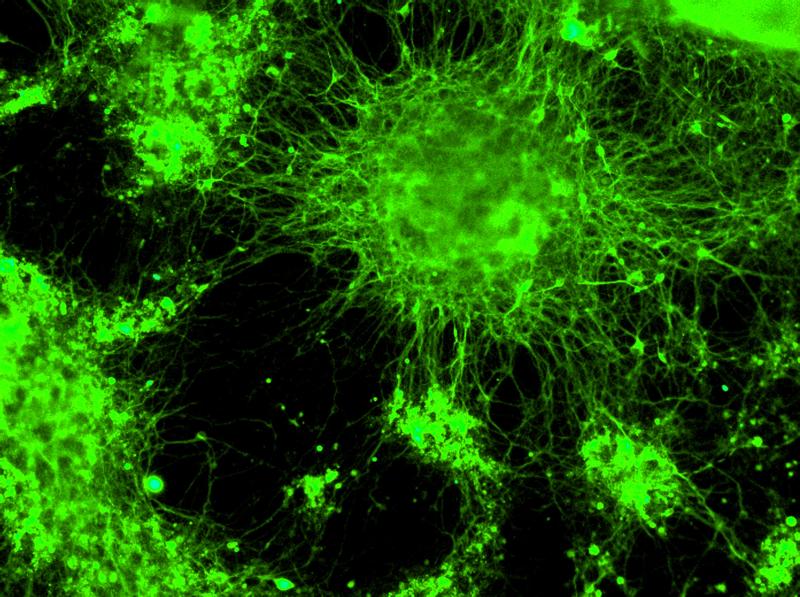

GNOME laser transfection can continuously achieve high vitality rates of over 80% in primary cells (here: cortical neurons).
Photo: LZH
Whether for drug screening, protein production or gene regulation, moving exogenous molecules into biological cells, also known as transfection, is a key technology for basic research and also for clinical and industrial applications.
The main challenge lies in permeating the cell membrane efficiently without having a lasting effect on the cell, or the functionality of the molecule.
Laser transfection with gold nanoparticles
The LZH has developed the gold nanoparticle supported laser transfection process GNOME (gold nanoparticle mediated), which allows high transfection efficiency with a minimal influence on the target cells, high vitality rates, and short process times.
The gold nanoparticles adhere to the cell membrane and accurately focus the laser energy of a pico-second laser. The membrane is permeated and exogenous molecules can flow into the cell.
The prototype shown at the Labvolution is suitable for all common microtiter plate formats, and is thus ideal for high throughput screening. As it is used, among other things, in the development of active agents.
Also, new therapeutics, for example based on CRIPR (Clustered regularly interspaced short palindromic repeats) technology, can be evaluated. Visitors of the exhibition can see the possibilities of the GNOME laser transfection and how it is operated.
The Lower Saxony Pavilion is organized by the Lower Saxony Ministry of Science and Culture as well as the Ministry for Economics, Labor and Transport.












